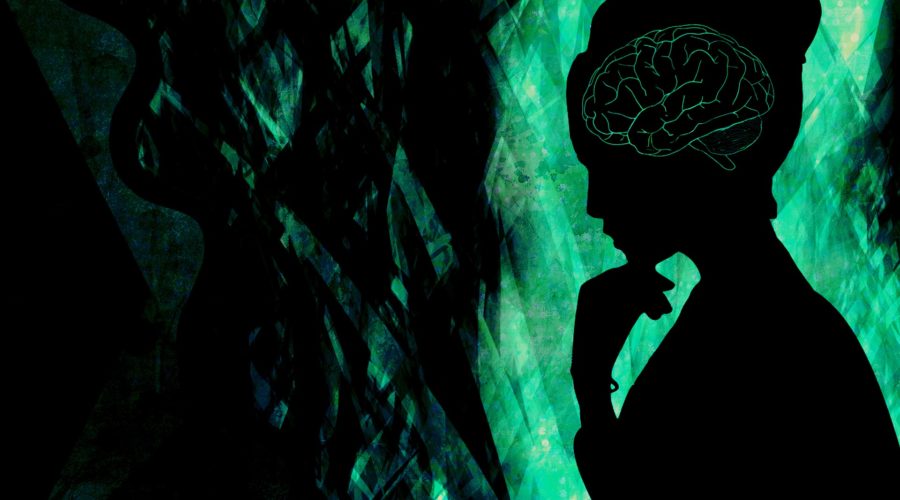Dark Energy, Entropy, And Psychedelics In The Brain
The brain has dark energy — just like the universe has dark energy.
Does this mean there’s a connection between the brain and the universe, that we’re actually hallucinating our universe? Or, better yet, that the universe is merely hallucinating our brain?
It’s too early in the day for that conversation, and, if you’re looking for this article to validate those beliefs, you’re probably going to be let down. I’m not academically equipped to give answers about how the universe is a macroscopic version of our brains. That’s beyond the scope of my understanding.
Interested in joining a Psychedelics Clinical Trial? Sign up here now and we will connect you with a clinical trial in your area when one becomes available.
However, I will tell you that your brain is filled with perpetually-shifting dark energy, and science still doesn’t fully understand why it’s there, or what it’s doing inside your skull.
Strangely enough, psychedelics may shed some light on the “dark energy”.
Dark Energy
Sure, it’s a fun term to throw in conversations, but what does Dark Energy mean in relation to the human brain? In the world of astrophysics, dark matter represents mass that’s unaccounted for in the universe. We know it’s there, but we don’t know what it is.
Every atom in the universe, and all light that has ever existed, only makes up 5 percent of matter in the universe — the rest is deemed to be “dark matter”.
Similar to dark matter, “dark energy” is the unaccounted for energy that accelerates the expansion of the universe. The distance of entire galaxies is not only expanding, but the acceleration of their expansion has increased — and that increase is referred to as “dark energy”. This makes up about 68 percent of total energy in the universe.
That’s more astrophysic talk than you expected out of this article, or not enough — depending on what you’re into. However, it’s necessary to introduce the concept of the dark energy that’s currently swirling around in your head.
RELATED: How Psychedelics Helped Hockey Player, Pro Fighters (and Me!) Heal from a Traumatic Brain Injury
Dark Energy And Neuroscience
Within neuroscience, the idea of Dark Energy in the brain was first mentioned in a 2010 Science Magazine article by neurologist Marcus E. Raichle. He presents dark energy in the brain as being similar to dark energy in the universe. Essentially, the brain outputs a massive amount of energy — an estimated 20 percent of the body’s total energy consumption.
Raichle estimates that 60-80 percent of the brain’s energy goes into the communication with other neurons and supporting cells — like astrocytes. Aside from that energy use (along with about 1 percent for our brain to respond to sudden environmental cues), the rest of the energy in the brain is essentially unaccounted — it’s dark energy.
Since I’m throwing a lot of percentages at you, it’s important to avoid confusion with the phony idea that we only use 10 percent of our brain. We use our entire brain, and it’s mostly dependent on what we’re doing.
For example, fine motor movements, like doom scrolling on Twitter, uses deeper layers of the motor cortex, along with subcortical structures like the limbic system. Our brain is always putting in the work. So if there’s one thing to take away from this article, it’s this: Humans absolutely use more than 10 percent of their brains.
However, the problem with dark energy is that it’s not a universally agreed-upon concept. Some scientists believe that all of the brain’s energy can be accounted for. Yet, some of the energy may be limiting the brain from doing other tasks.
Housekeeping Energy
Researcher Elisabeth Engl believes a lot of the brain’s unaccounted energy goes towards what’s been deemed “housekeeping” tasks. These are non-signaling tasks, meaning the energy being exerted is not from brain cells talking to each other.
Instead, this “housekeeping” energy consists of things like the rearrangement of the structure (cytoskeletal) of cells and protein synthesis. This is for things like telomere restoration.
Estimates claim that about 25 percent of energy used in the brain is dedicated towards these housekeeping tasks. Now imagine your life if you spent 25 percent of it cleaning your bathroom, every day until you die. There wouldn’t be much energy left for anything else in your life — and in the brain, it’s similar.
Engl notes that, if the energy needed for those housekeeping tasks can be significantly reduced, our brain would have far more energy for processing information. She also believes that “animals that have reduced housekeeping cost would have a ‘cognitive advantage.'”
So what happens to this “housekeeping” and possible dark energy when a person does psychedelics? If psychedelics could reduce this energy usage in some way, maybe we could reserve more energy for processing information and computation. Surely there must be some brilliant psychedelic study that looked at this.
Psychedelics And The Brain’s Energy Landscape
Earlier this month, scientist Parker Singleton published a groundbreaking study on psychedelics and energy usage in the brain.
Using fMRI and PET data, which are two distinctly different neuroimaging technologies, he discovered that psychedelics actually lowers the energy costs of the brain switching between various networks and states. Not only that, but this lowered energy cost results in the brain increasing the amount of times it switches between these states and networks.
Are these lower energy costs directly related to the neurological “housekeeping” tasks Engl mentions? Or is this in relation to the ‘dark energy’ from Raichle? It’s a question that may not have a clear answer.
The Network Control Theory
Singelton approaches energy use in the brain with the “Network Control Theory“. This is a robust way of accounting for the dynamic states of our brains. It may be fun to identify a single part of the brain and deem it responsible for a variety of things, however, that’s not entirely true in neuroscience.
While some parts of the brain specialize for certain cognitive activities, it takes a neurological village of brain states and networks to do just simple tasks — or even no tasks at all. Our brain is constantly switching between these dynamic states. Using psychedelics (through 5-HT/serotonin receptors) disrupts the equilibrium of these states.
The reduced energy costs Singelton revealed in his study appears to be signaling-tasks. Neurons and networks communicating with each other — and not the non-signaling or ‘”housekeeping” tasks we referred to earlier.
Remember, if we just could have reduced those costs, perhaps we could say psychedelics give our brain more energy. It could then process information, using the “cognitive advantage” that Engl mentions.
Wow, we were almost there. The definitive proof needed to say things like “psychedelics expand the mind” just fell through our fingertips.
Or, maybe it didn’t.
The Poorly Understood Mechanics Of Energy In The Brain
Singleton’s study measured “transition energy”. This is the total energy it takes from one brain state/network to communicate, and (eventually) transition to another dynamic state. However, transition energy is also measured in how long a brain state can maintain stability.
The study revealed that the energy required to maintain dynamic states was reduced or “flattened” during a psychedelic experience. But what about the “housekeeping” energy in the brain? Does this energy also require to maintain these dynamic states?
Non-signaling brain energy, some of which is neurological “housekeeping”, is poorly understood. We don’t know the percentage of, let’s say, lipid and protein synthesis used during these dynamic state transitions while under psychedelics (or if it’s used at all).
However, we do have strong evidence that suggests:
- Reduced non-signaling energy use could lead to an increase in energy for processing information
- Psychedelics (LSD and psilocybin, at least) lowers brain energy for networks to transition and switch
We may not have complete understanding of the brain while under psychedelics, but we do have theories. And it would be ridiculous to spend all this time talking about brain energy and psychedelics without mentioning the Entropic Brain Theory (EBT).
Entropic Brain Theory
EBT is, undoubtedly, one of the more established psychedelic theories out there.
Invented by Robin Carhart-Harris at Imperial College London in 2014, it’s given science a decent primer as to potential neuromechanics typically occurring during psychedelic experiences.
The entire theory can be wrapped up into one idea. People not on psychedelics maintain stable energy within the brain — which results in a normal depiction of reality. But when taking psychedelics, the entropy within the brain increases to the point of criticality. This means the stability of energy within our brain suddenly becomes unstable.
For nuclear physicists reading this, the high-entropy process in the brain approaches “critical mass“. This point of criticality is theorized to do interesting things to our perception and cognition — which is what a psychedelic trip is.
Singleton’s study of brain energy and psychedelics is, arguably, the greatest modern example of entropic brain theory. There is a correlation between the intensity of a subjective experience (the perceived psychedelic trip), and the reduction of energy levels it takes for dynamic brain states to transition. This leads to a greater amount of dynamic states occurring to the point of criticality.
Conclusion
There’s still a lot that we didn’t cover, like the concept of hemodynamics, which is how oxygenated and deoxygenated blood flows in your brain. The potential to learn from technology like fNIRS when applied to psychedelics is innumerable. Hemodynamics was actually an entire section that I removed from this article, saved for another day.
Truth is, psychedelic neuroscience is estimating dynamic states of the brain, and the energy that it uses throughout. We see the energy being used in the brain, but a portion of that energy is still undetermined. It’s not that this energy resides in some extra-dimensional space, or whatever you’ve seen in sci-fi “psychological thrillers”.
Humanity’s lack of understanding energy dynamics in the brain is also derived from not having highly-efficient neuroimaging technology to rely on. The tech will always get better. And, as techniques improve, that dark energy lodged in your brain will actually be accounted for.
For now, tell friends your head is full of dark energy — especially if you want to freak them out.



